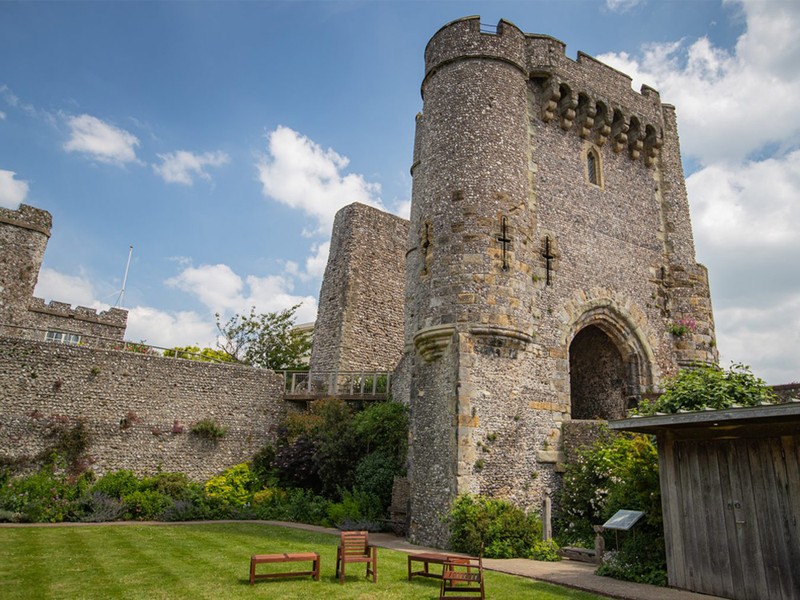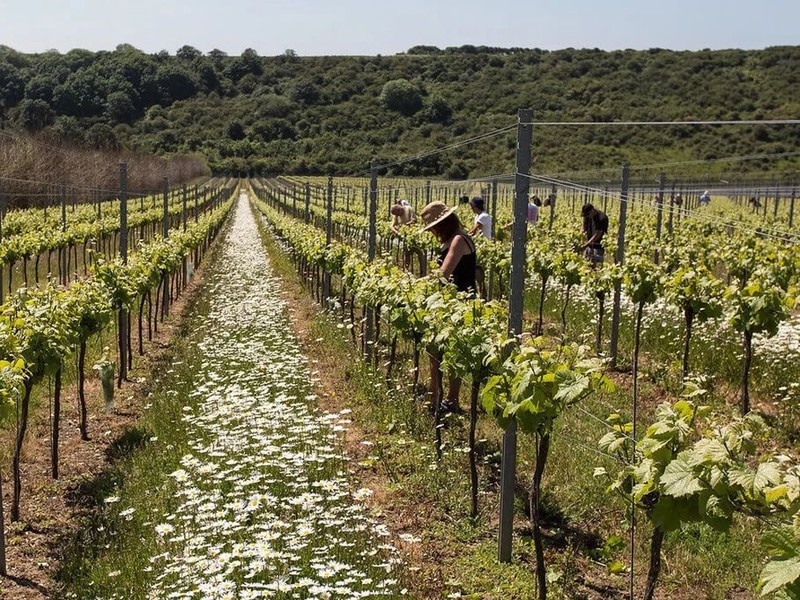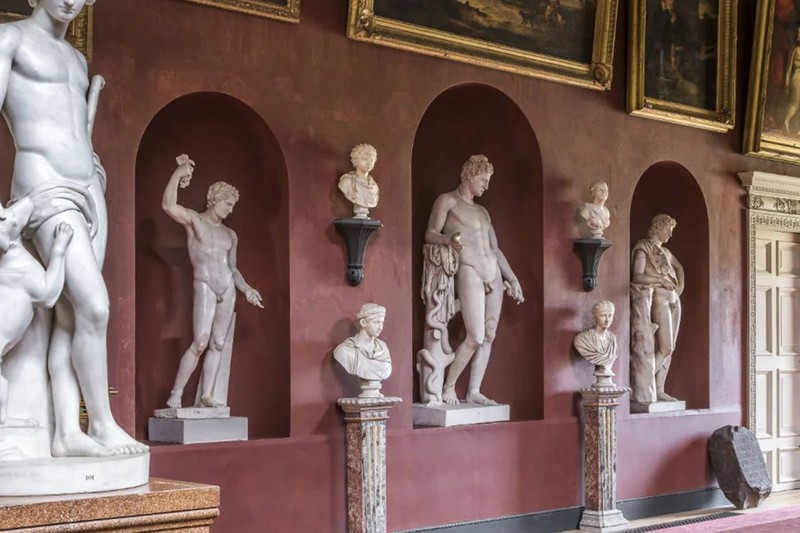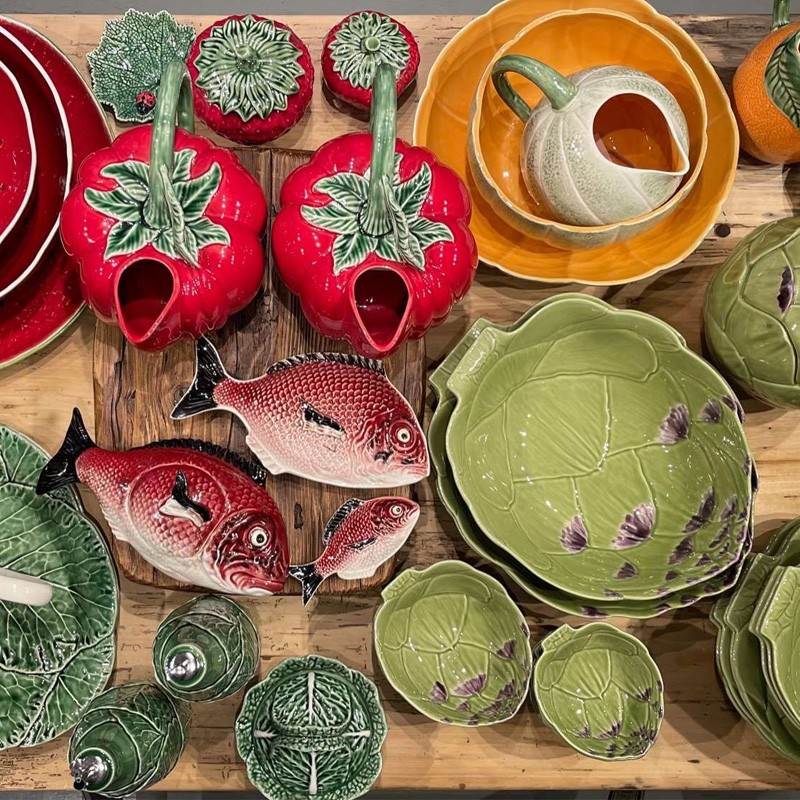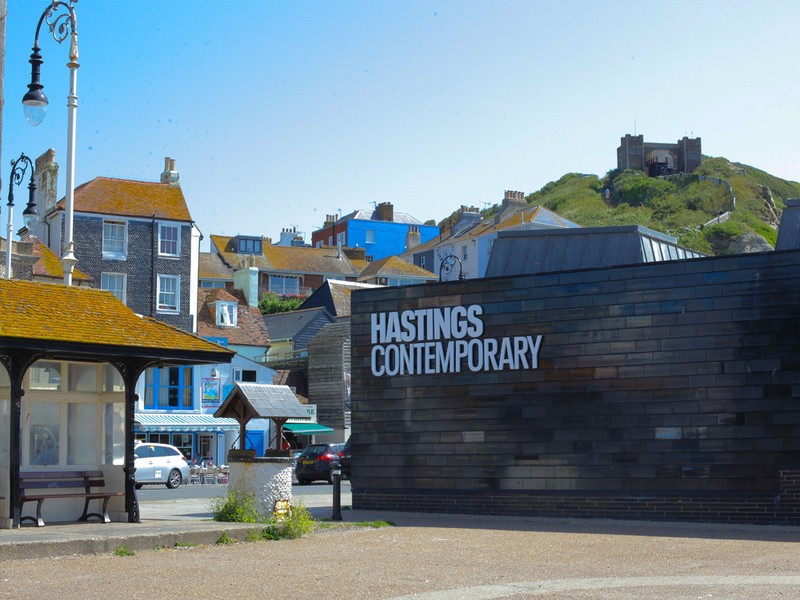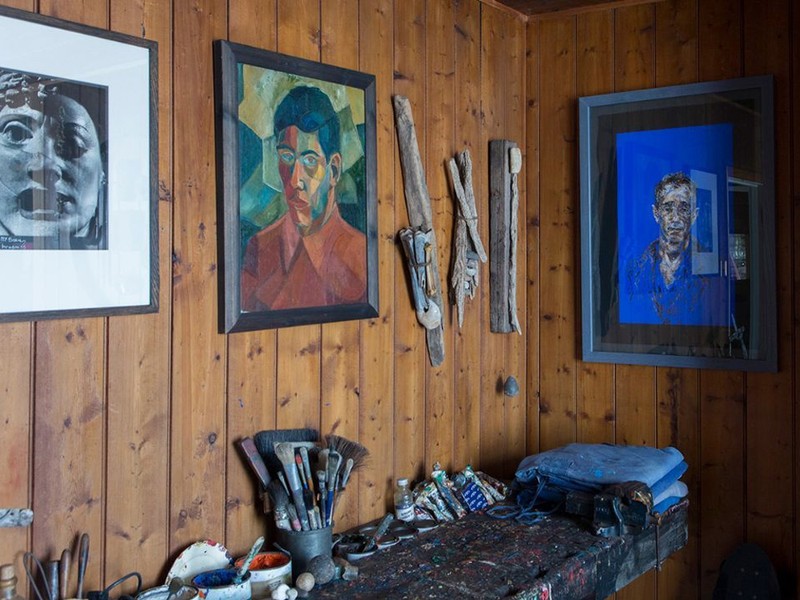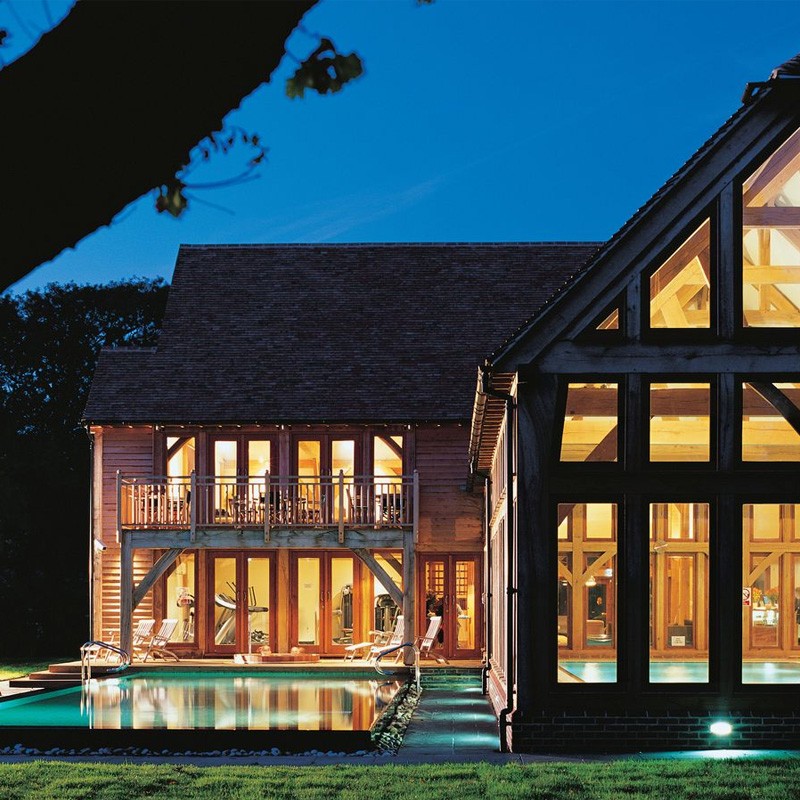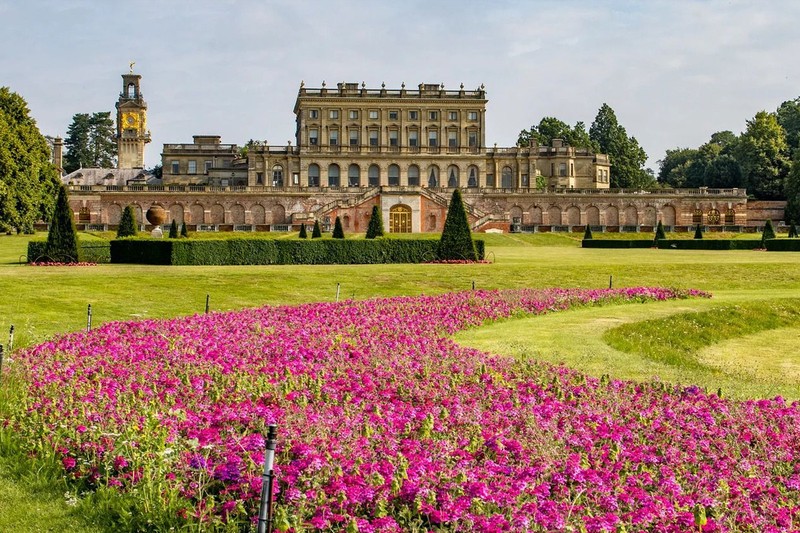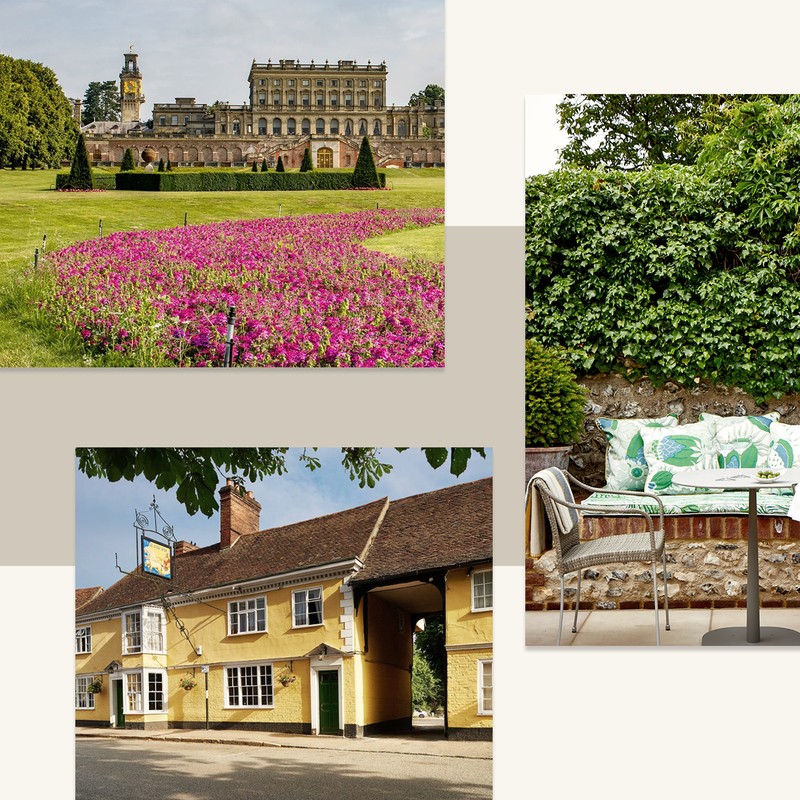
10 Of The Best Day Trips From London
LEWES
Just eight miles inland from Brighton, Lewes offers much of its neighbour’s quirky charm, but has an historical edge over the seaside town. Lined with cobbled streets and framed by Lewes Castle, the town is perhaps best known for its spectacular Bonfire Night celebrations, where rival societies parade through the streets with lit torches and effigies. Away from that one night a year, Lewes is a much more genteel location, with plenty of antiques shops (we love the Lewes Flea Market), cafes and cosy pubs along the river to keep visitors occupied. The original Bill’s is still located in Lewes, but we love Caccia & Tails for modern Italian dishes and newcomer Fork, headed up by the former head chef at The Dairy in Clapham, which serves a seasonal five-course set menu at weekends for £45pp.
How to get there: London Victoria to Lewes takes approximately 1 hour 10 minutes direct by train. By car, it takes around 1 hour 30 minutes from south London.
SOUTH DOWNS
We could easily write a whole feature on the beautiful but vast South Downs. A hit with walkers of all abilities, there are dozens of well-known scenic routes, from the chalk cliffs of Beachy Head and Seven Sisters to Eric Ravilious-era hotspots such as Cuckmere Haven (if you’re a fan, many of Ravilious’ works can be seen at the Towner Art Gallery in Eastbourne). For an afternoon out that combines many of the South Downs’ charms – views, art and local beer and wine – look to the picture-perfect village of Alfriston. Here you can enjoy afternoon tea at Badger’s tearoom, a G&T and lunch in the courtyard of the glossily refurbished The Star and browse through the impressively stocked Much Ado Books. Much of the area is associated with the Bloomsbury Group: Charleston in Firle is the former home of Vanessa Bell and Duncan Grant, and is now a museum and art gallery, while Monk’s House in Rodmell – the final home of Virginia and Leonard Woolf – is now looked after by the National Trust. Elsewhere, Farleys House & Gallery is the former abode of Lee Miller and Roland Penrose, and these days celebrates Surrealist art and sculptures. If you’re after a decent country pub in pretty surroundings, book lunch at The Ram Inn in Firle, not far from Glynde, where the annual opera festival takes place. And if you’re into wine, there are plenty of vineyards worth exploring: we like Rathfinny Estate, Ridgeview and Nyetimber.
How to get there: London Victoria to Haywards Heath takes approximately 45 minutes direct by train. Car journeys can take anywhere from 1 hour to 2 hours, depending on where you’d like to visit.
PETWORTH
Best known for its grand National Trust property, Petworth House, this West Sussex gem is close to the border of Surrey, so is easy to get to from the capital. As well as the house itself – which has a magnificent collection of Turners, Van Dykes and Blakes, a huge deer park and a decent second-hand bookshop – you’ll find a small town crammed with antiques shops (the most prestigious of which is Augustus Brandt, although we also love the more affordable Petworth Antiques Market), small delis such as the excellent Hungry Guest, and quaint tearooms. For a hit of art, check out Newlands House Gallery; for book browsing check out Readers on the market square; and for a spot of homewares shopping, make sure to pay Tallulah Fox a visit. Finally, walk across the deer park and you’ll find The Horse Guards Inn house and botanical gardens in the village of Tillington, an excellent gastropub with one of the nicest suntrap beer gardens we’ve come across.
How to get there: London Bridge to Pulborough takes approximately 2 hours by train, and from there there’s a direct bus route. By car, it takes around 1 hour 15 minutes from south London.
WAKEHURST
The sister site to Kew Gardens, this house and botanical gardens is now run by the National Trust. Home to the Millennium Seed Bank and over 500 acres of the world’s plants, this is a great place to visit with families: in Woodlands of the World, visitors can walk beneath the sweet gum trees of North America or search for the Wollemi pine, a 'living fossil' as old as dinosaurs, in Coates Wood; there are natural play spaces such as woven willow structures to run through, a labyrinth and a series of talking totem poles; and there’s the Tree Trunk Trek for those who like adventures. Away from children’s activities, there’s a 150-acre nature reserve, the Elizabethan Mansion – which houses an impressive collection of paintings – and a number of decent cafes and restaurants. Located in Ardingly, this is an ideal place to head for lunch and a walk after a morning at the famous antiques fair.
How to get there: London Victoria to Haywards Heath takes approximately 45 minutes direct by train, and from there it’s a short bus ride away. By car, it takes around 1 hour 15 minutes from south London.
DUNGENESS
Close to south coast hotspot Rye, Dungeness is perhaps most famous for the late artist, activist and film director Derek Jarman’s Prospect Cottage, a black timber cottage from where he managed to grow a garden among the shingles. More than 25 years after his death, the former fisherman’s hut is still a place of pilgrimage for many, and last year reached its £3.5m crowdsourcing target to save the site for future generations. Located on a remote shingle beach on the southernmost point of Kent (the Met Office calls it “Britain’s only desert”), the small, wild hamlet of Dungeness is probably best visited in tandem with its more famous neighbours Camber Sands and Rye. For those who like a walk, make sure to bring your walking boots and take a stroll around the RSPB Dungeness Nature Reserve, a circular trail that takes in wild meadows and the wetlands of Romney Marsh. A lunch of fish and chips is a must – locals rave about The Pilot Inn – followed by a tour of the Grade II-listed Old Lighthouse and a trip along the Romney, Hythe & Dymchurch Railway, Kent’s ‘mainline in miniature’.
How to get there: St Pancras to Rye takes approximately 1 hour 10 minutes direct by train, and from there it’s a short bus ride away. By car, it takes around 2 hours from south London.
HASTINGS
Both Hastings and neighbouring town St Leonards-on-Sea are filled with art-deco architecture and an array of caves and attractions that belie the region’s heritage as a smuggler’s paradise. East along the shingle seafront of Stade beach you’ll find Hastings Fishermen’s Museum and Shipwreck Museum – both a hit with kids – while Hastings Contemporary focuses on contemporary art. We recommend heading to Maggie’s for fish and chips before roaming the town’s pretty cobbled streets and vintage shops. AG Hendy & Co is a must for on-trend industrial interiors finds, while Butler’s Emporium and Robert’s Rummage are best for second-hand gems. On a hot day, we love tucking into one of Tush & Pat’s fisherman’s rolls – two pieces of pan-fried fish in a soft roll – while The Crown serves great Sunday lunches in modern surroundings.
How to get there: Charing Cross to Hastings takes approximately 1 hour 50 minutes direct by train. By car, it takes around 2 hours 30 minutes from south London.
ESSEX
On the northern border of England’s most misunderstood county and Suffolk, Dedham Vale has been a poster child for England’s landscapes ever since John Constable put oil to canvas and came up with ‘The Hay Wain’ in 1821. As the double centenary of the landscape painter’s masterpiece approaches, it’s a good time to find out what all the fuss is about – and Flatford, the National Trust-run property where the ‘Hay Wain’ was painted, is an ideal place to do it. A short walk away, The Sun Inn at Dedham is a proper old coaching inn with open fires if it’s cold and a terrace if it’s not. If you want to break up the on-foot explorations of the surrounding Area of Outstanding Natural Beauty (AONB), the pub can sort you out with bikes and even a boat to float down the river Stour on. When you’re ready to leave the vale, follow the Stour estuary a few miles out to Wrabness, where you’ll find Grayson Perry’s ‘A House For Essex’. Naturally, Maldon is the place to head to for oysters and boat trips along the Blackwater estuary while Mersea Island – nine miles south of Colchester – offers seven miles of sandy beaches, fresh seafood and great views. Just make sure to check the tide timetables.
How to get there: London Liverpool Street to Colchester takes approximately 50 minutes direct by train. By car, it takes around 2 hours from south London.
CHICHESTER
Well known for the ‘Festival of Speed’ and ‘Goodwood Revival’ events held at Goodwood Estate each year, Chichester is a cathedral city in West Sussex. The city is home to a pretty harbour, where visitors can watch the boats sail past, and is just a short drive to West Wittering beach, a designated Area Of Outstanding Natural Beauty. Here, families can embark on the Windmill Trail, a relaxed walk that leads to the picturesque Halnaker Windmill, or visit Medmerry Nature Reserve for some wildlife spotting. Chichester has lots of charming shops, from high-street favourites to quirky, independent stores: we like Draper’s Yard for under-the-radar brands and to rummage for a one-off gem. If food’s your thing, nearby Littlehampton and the Thomas Heatherwick-designed East Beach Café is well worth a detour, while Bailiffscourt Hotel just off pretty Climping beach has a great spa and lovely walled garden where guests can have afternoon tea or early evening drinks.
How to get there: London Victoria to Chichester takes approximately 1 hour 30 minutes direct by train. By car, it takes around the same time from south London.
THE NEW FOREST
The expansive New Forest – which stretches from Hampshire to Wiltshire and parts of Dorset – offers day-trippers the chance to trade in congested city streets for a rather different traffic issue: wild horses, which rule the roads here. Whether you drive or take the train to one of the area’s eight train stations, exploring the forest is very accessible and there’s something for everyone. Visitors can choose to walk through sunlit woodland lanes, hire bikes and cycle across open pastures, try paddle-boarding, go horse riding or explore the charming market towns that dot the area, such as Beaulieu (where you can visit the National Motor Museum), Lymington and Lyndhurst. For a lovely lunch or early evening dinner, look to Lime Wood Hotel (which also has a spa and pretty outdoor pool) or dine at the original The Pig hotel.
How to get there: London Waterloo to Brockenhurst takes approximately 1 hour 30 minutes direct by train. By car, it takes around 2 hours from south London.
MARLOW
Let’s be honest – for many, the beautiful Thames-side town of Marlow is all about the food. Not only is there the famed Michelin-starred The Hand & Flowers, there’s also Tom Kerridge’s The Coach and The Butcher’s Tap. As the UK’s only pub with two Michelin stars, the former offers bold yet unpretentious reinterpretations of pub classics: think slow-cooked duck breast with crispy, duck-fat chips. Away from Kerridge’s empire, the Georgian town offers all the charm of its neighbours, Henley and Windsor. Expect cobbled streets, a selection of interesting shops and plenty of places to watch all the action on the river with an ice-cream in hand – we like picturesque Marlow Lock. Just north of the town, you’ll find the Chiltern Hills, another Area of Outstanding Natural Beauty. From the town centre, there are two circular walks or visitors can opt for a visit to Cliveden, where a stroll around the estate is a must.
How to get there: Marylebone to High Wycombe takes approximately 30 minutes direct by train, then a ten-minute taxi. By car, it takes around 1 hour from south London.
DISCLAIMER: We endeavour to always credit the correct original source of every image we use. If you think a credit may be incorrect, please contact us at info@sheerluxe.com.
